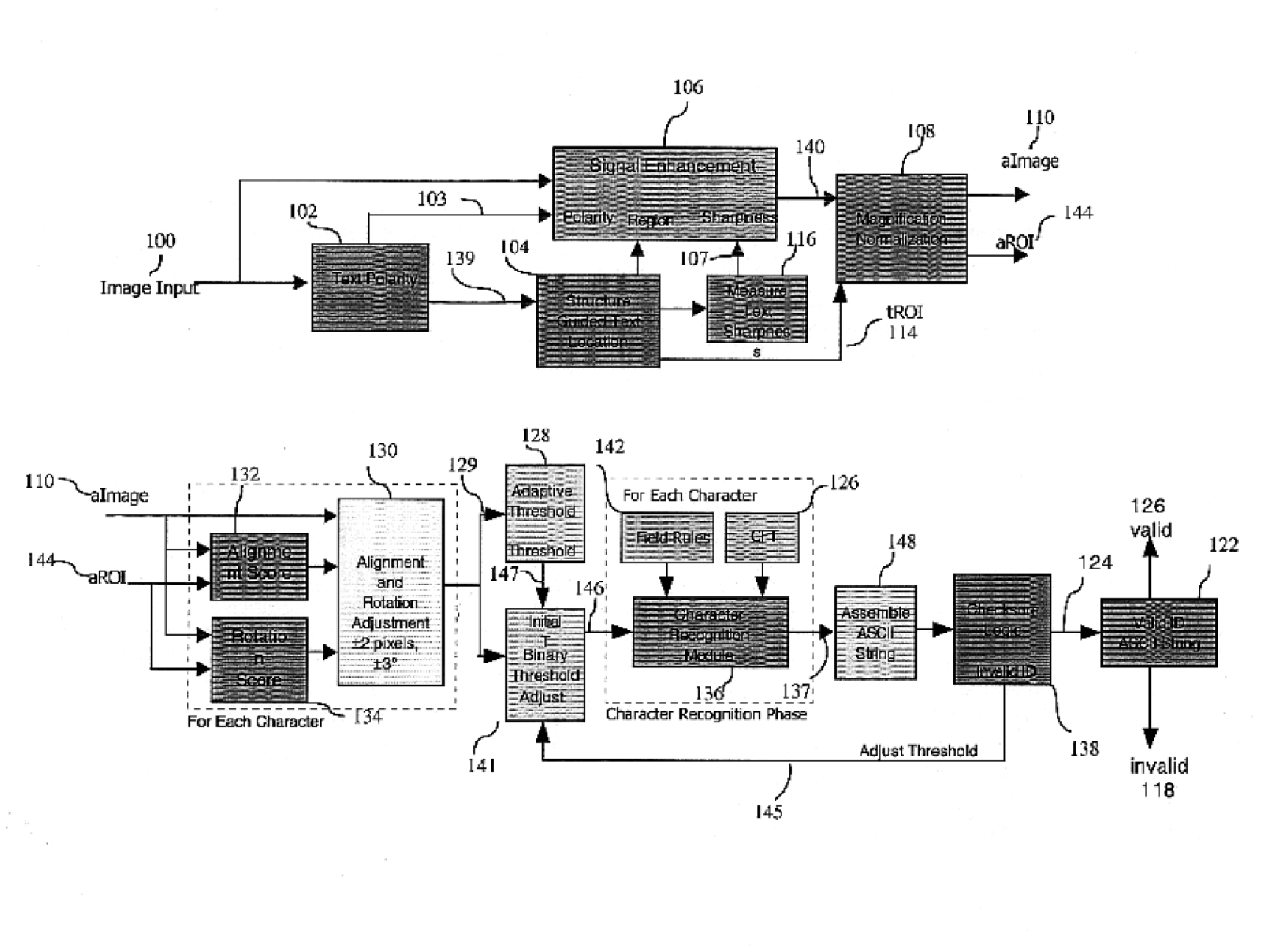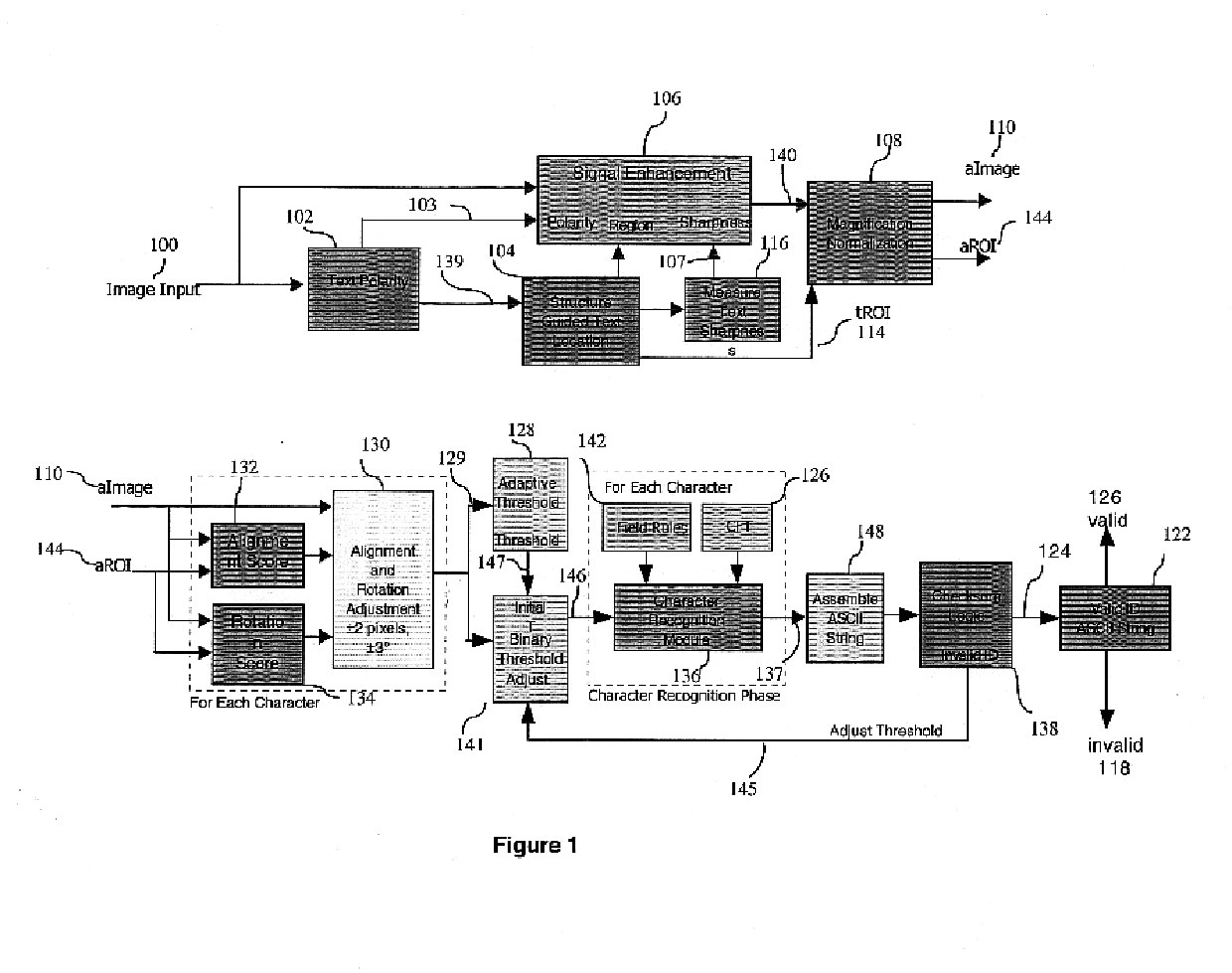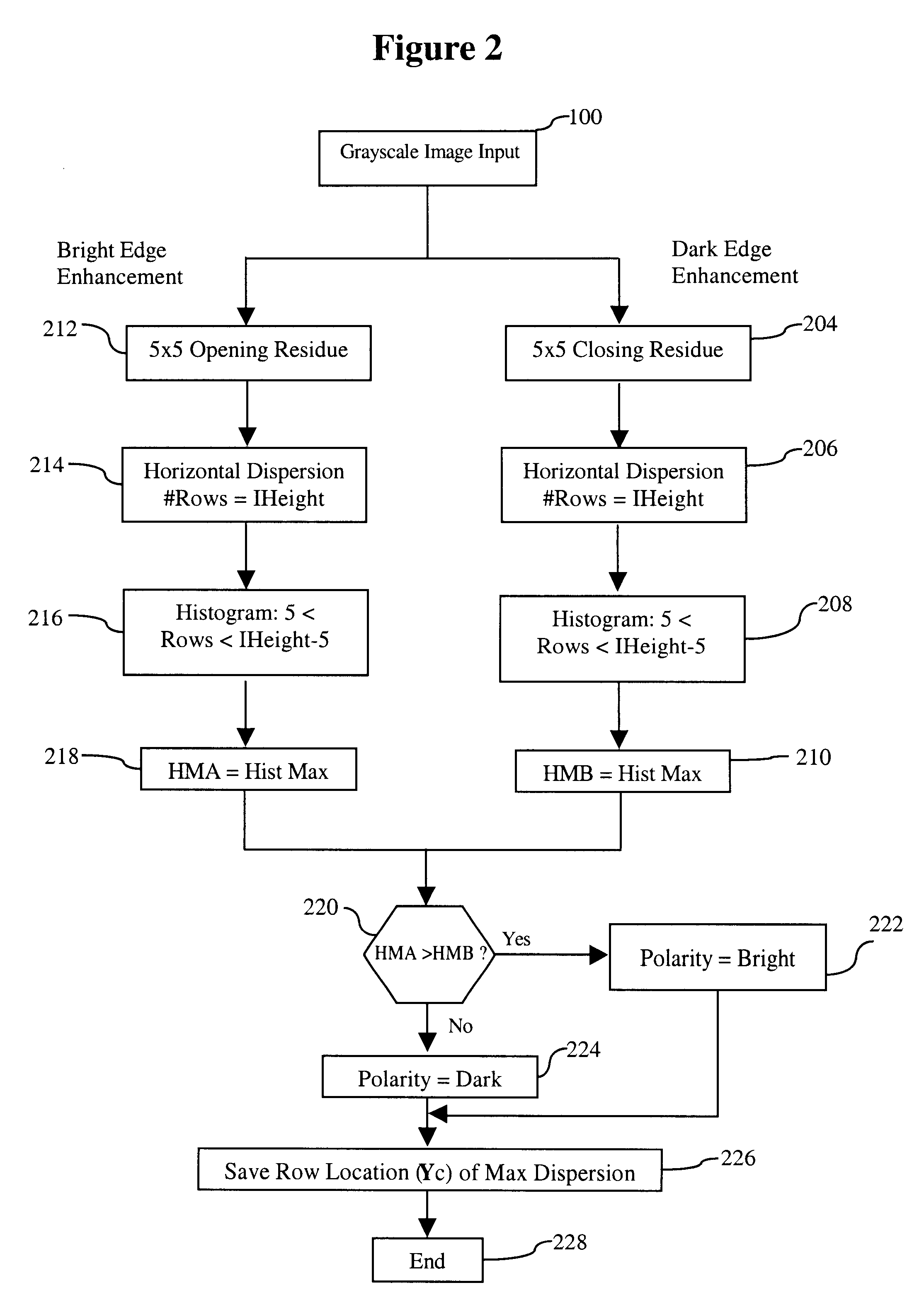Robust method for automatic reading of skewed, rotated or partially obscured characters
a technology of automatic reading and rotating characters, applied in the field of robust methods for automatic reading of skewed, rotated or partially obscured characters, can solve the problems of limited application of scanlon's method, inapplicability to strings without grammatical or structural context, and computational cost, so as to reduce the contribution to the overall score, reduce the number of correlation operations required, and increase the accuracy of character classification
- Summary
- Abstract
- Description
- Claims
- Application Information
AI Technical Summary
Benefits of technology
Problems solved by technology
Method used
Image
Examples
Embodiment Construction
, paragraphs 4-7 inclusive) improve overall classification accuracy by employing a confusion matrix based on sentence structure, grammatical rules or spell checking algorithms subsequent to the primary OCR recognition phase. Each reference word is assigned a replacement word probability. This method, although effective for language based OCR, does not apply to strings that have no grammatical or structural context such as part numbers, random string sequences, encoded phrases or passwords, etc. In addition, Goldbergs approach does not reprocess the image to provide new input to the OCR algorithm.
Other prior art methods improve classification performance by utilizing a plurality of OCR sensing devices as input (U.S. Pat. No. 5,807,747 by Bradford et. al. entitled "Apparatus and method for OCR character and confidence determination using multiple OCR devices", Sep. 8, 1998, Detailed Description of the Preferred Embodiments, paragraphs 4-7 inclusive). With this approach a bitmapped rep...
PUM
 Login to View More
Login to View More Abstract
Description
Claims
Application Information
 Login to View More
Login to View More - R&D
- Intellectual Property
- Life Sciences
- Materials
- Tech Scout
- Unparalleled Data Quality
- Higher Quality Content
- 60% Fewer Hallucinations
Browse by: Latest US Patents, China's latest patents, Technical Efficacy Thesaurus, Application Domain, Technology Topic, Popular Technical Reports.
© 2025 PatSnap. All rights reserved.Legal|Privacy policy|Modern Slavery Act Transparency Statement|Sitemap|About US| Contact US: help@patsnap.com



